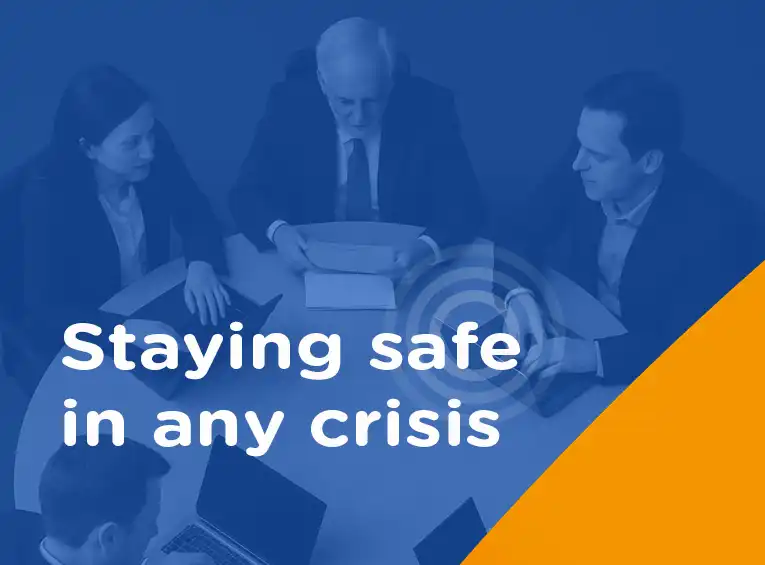Table of contents
Communication in Times of Crisis: A Matter of Seconds
Structured crisis communication determines the success of an organization’s response within seconds, by defining clear information flows and responsibilities. In emergencies, not only operational chaos often arises, but also uncertainty about who needs to be informed, what may be communicated, and which measures should take priority.
Uncoordinated messaging, contradictory information, and duplicated efforts are common consequences — with potentially severe implications for overall emergency management.
The BCI Emergency & Crisis Communications Report 2023 emphasizes that collecting, validating, and sharing accurate information is the greatest challenge during alerting and crisis management. Organizations without clear, structured communication processes risk losing valuable time, responding ineffectively, or spreading incorrect information — with far-reaching consequences for operational stability and trust (Business Continuity Institute, 2023).
What Characterizes Structured Digital Crisis Communication
Structured digital crisis communication is more than just setting up an alerting chain. It is about defining who gets informed in which situations, through which channels, and with what message.
Four principles are essential here:
- Relevance: Only the right people receive the necessary information.
- Clarity: Messages are clear, action-oriented, and unambiguous.
- Redundancy: Information is shared through multiple channels to compensate for possible system failures.
- Feedback: It is verified whether messages have actually been received and understood.
These four pillars form the foundation of a robust alerting process. They ensure that, in stressful situations, no additional uncertainty arises — but rather that everyone can act quickly and effectively.
Examples of Structured Communication Processes
In many organizations, predefined scenarios are in place, with fixed communication routes for different types of crises.
For example, in the event of an IT outage, the IT security officer informs management and the communications team via a priority channel. At the same time, the affected departments receive a notification through a redundant alerting system, such as a push notification and a voice call.
Tasks and status updates are recorded centrally, so all stakeholders have continuous insight into the current situation — an important contribution to transparency and real-time coordination.
How Organizations Can Optimize Their Digital Crisis Communication
Setting up structured digital crisis communication does not begin only when a crisis strikes. Regular testing of processes, clear role assignments in emergencies, and the use of modern systems that automatically combine multiple communication channels are strongly recommended.
Critical Event Management platforms such as MultiBel support organizations in setting up these structures simply and flexibly, and in activating them reliably in case of emergency. They are not just technical solutions, but an integral part of a well-thought-out business continuity management strategy that goes beyond merely reacting.
A well-prepared organization does not act faster because it has more information — but because the right information reaches the right people at the right time.









